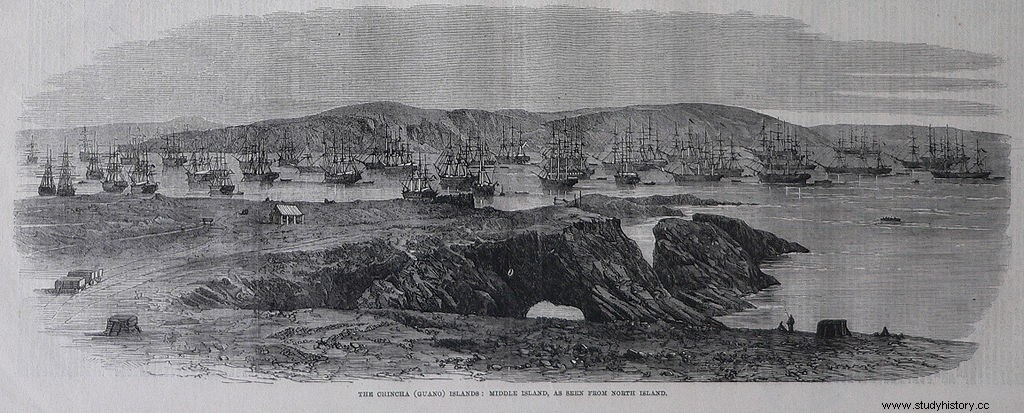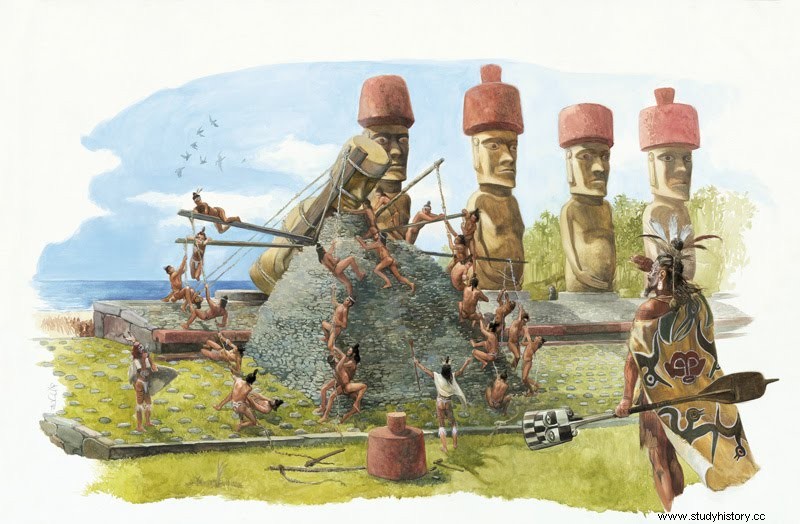In the mid-19th century, the use of guano (seabird droppings) began to be used as a fertilizer to enrich the depleted or poor farmland of old Europe. Its collection was done, almost exclusively, in the Chincha Islands (Peru). This area of the Pacific is populated by producers of guano (seagulls, pelicans...) that for years has been accumulating on the insular surface forming a layer several meters thick. Peru controlled the production and England its trade. The United States remained outside the direct control of the guano and, therefore, had to import it from England at very high costs.

As expected, many other Pacific islands were also potential producers of the precious fertilizer. In 1856, to reduce costs and not rely on imports, the United States Congress passed the Guano Islands Act (Guan Islands Act), authorizing United States citizens to take possession of islands with guano deposits:
When any citizen of the United States discovers a deposit of guano on any island, rock, or cay, not within the lawful jurisdiction of any other government, and not occupied by citizens of any other government, and peacefully takes possession of, and occupies, whether island, rock, or cay, may, at the discretion of the president, be considered to belong to the United States.
More than one hundred guano deposits were claimed as American under this act. Today, several of these islands are still under US rule. The response of Peru and England was to increase the production of the Chincha Islands and try to monopolize the market. For this they needed to hire more labor... and cheap. Ships were sent to China where humble peasants were promised well-paying jobs in the gold mines. When they arrived in Peru, they were sent to the islands to work in the guano mines in conditions of semi-slavery. In 1875 there were more than one hundred thousand Chinese in Peru. Due to the high mortality of Chinese workers (suicides, illnesses, accidents...) and the decrease in new remittances (news of false job offers began to reach China, the origin of the expression «you have been deceived like a Chinese «) had to look for new sources of labor.

Unfortunately for the Easter Islanders, the new target was Easter Island . At the end of 1862, eight ships sailed from Peru and after traveling more than three thousand kilometers they arrived at Easter Island. After an exchange of trinkets and gifts, the sailors surrounded the Easter Islanders and captured them. Some were killed in flight, others fell off the cliffs... a third of the population (almost all adult men) were taken prisoner and taken to work in the guano mines. In the end, England and the United States understood that Peru had exceeded and forced the release of the prisoners from Easter. When the survivors of the forced labor were repatriated, only a hundred men remained alive. On the way home, smallpox killed eighty-five. Only fifteen returned to set foot on Easter Island and not all of them in perfect condition. It was the lace of the Rapa Nui, the culture that built the enigmatic moais.
Illustration:Edit
